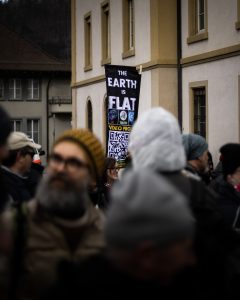Earlier this year, a heated debate over the H-1B visa program erupted among key supporters of President Trump and soon sparked reactions across the political spectrum. The H-1B visa is a temporary, employer-sponsored work authorization granted to foreign nationals in “specialty occupations,” typically requiring a bachelor’s degree or higher. It imposes an annual cap of 85,000 visas, distributed through a lottery. The program has drawn criticism from multiple sides. Elon Musk criticized the current restrictions, arguing that they hinder the entry of crucial global talent into the U.S. high-tech sector. Conversely, Steve Bannon denounced the H-1B system as exploitative, calling it a form of “indentured servitude,” while Senator Bernie Sanders highlighted concerns about displacement of American workers through cheaper foreign labor. Vivek Ramaswamy attributed the shortage of high-tech workers to failures in American education, and even culture. These conflicting perspectives share common ground: an acknowledgment that the existing H-1B framework needs reform.
China’s DeepSeek, a fast-rising AI startup composed primarily of China-educated researchers, further highlights the urgency for the U.S. to retain top STEM talent. Prior to this recent controversy, the H-1B program had rarely attracted sustained national attention or robust scholarly analysis, with much law review coverage consisting of student-authored comments. One reason for this conceptual gap, I suggest, may be the H-1B workers’ ambiguous legal position—they are non-citizens, yet their presence intersects significantly with corporate priorities, national interests and domestic labor concern.
This controversy engages deeper philosophical issues concerning justice, rights, and institutional accountability. A central contradiction lies at the heart of the H-1B visa’s design: it purports to fill labor shortages, yet its practical function has evolved into a general talent recruitment strategy for tech firms. With an annual cap of just 85,000 visas distributed via a lottery system, talented individuals are selected arbitrarily rather than by skill or actual demand. Applicants face odds lower than 30%, and this randomness invites fraudulent practices, such as creating shell companies to submit multiple entries.
Philosophically, this situation reflects a significant tension between formal rights and substantive realities, a classic dilemma explored by thinkers like Giorgio Agamben. Agamben‘s concept of the “state of exception,” which centers on sovereign power’s ability to suspend law under the guide of crisis, illuminates the ambiguous legal status experienced by H-1B workers. Although Agamben primarily develops this concept in relation to emergency powers, such as wartime or anti-terrorism executive orders, it can be productively extended to the case of H-1B workers. In his theory, Agamben describes how sovereign powers suspend normal legal protections, creating a blurred zone between legality and illegality. H-1B visa holders exist precisely in such a suspended state, legally present but lacking full protections afforded to citizens or permanent residents. Despite their considerable economic and social contributions, their rights remain contingent and susceptible to revocation based on employment conditions.
In fact, it is by design that the H-1B visa constitutes a temporary legal category, which means its holders are not granted the full rights afforded to U.S. citizens, even though they are subject to the same tax and employment laws. Over time, however, this temporary (and exceptional) condition has become normalized, as the U.S. admits 85,000 H-1B workers annually. This normalization is precisely what makes the H-1B workers attractive to large employers: it generates a stable, renewable supply of skilled labor that remains structurally dependent on employer sponsorship. Therefore, H-1B workers can arguably be understood as approaching a condition of “bare life” in Agamben’s sense: they remain physically present in society, often for years, even over a decade if they apply for employer-sponsored green cards, yet their continued legal status is contingent upon their employment.
This legal and existential limbo fundamentally challenges classical liberal conceptions of autonomy and individual freedom. Classical liberalism presumes that individuals freely enter into contracts as independent agents. However, H-1B visa holders, bound to sponsoring employers, operate within an environment of significant power imbalance. Employers shoulder significant legal costs, granting them disproportionate power over workers, who must navigate complex procedures to change jobs and risk losing their visas if terminated. Their capacity to negotiate or advocate for improved working conditions is sharply restricted, as doing so risks their legal status. The 60-day grace period following layoffs offers minimal protection, especially during industry-wide downturns in sectors like technology. This condition, again, resembles what Agamben identifies as “bare life,” a form of existence reduced to mere survival, regulated and controlled without the robust guarantees typical of full political or social belonging.
Furthermore, structural inequities embedded within the H-1B program highlight disparities in access and opportunity. STEM graduates benefit from extended post-study opportunities, significantly increasing their chances of securing a visa compared to those in non-STEM fields. Similarly, large corporations possess the resources necessary to navigate bureaucratic complexities, monopolizing visa access and disadvantaging smaller entities like startups and nonprofits. Such structural conditions amplify existing inequalities, undermining the principles of fairness and equal opportunity.
Meaningful reform must therefore directly address these fundamental injustices. A promising approach involves removing the employer-sponsorship requirement altogether, shifting towards merit-based immigration models such as the U.K.’s High Potential Individual visa. Such a change would restore autonomy and equitable conditions for foreign workers and ensure a fairer distribution of talent across industries and company sizes. This model also better aligns the program to attract global talent, something the current O-1 visa, with its exceptionally high threshold, cannot adequately accommodate.
Ultimately, applying philosophical critiques such as Agamben’s state of exception provides crucial insights into the necessary direction for reform. Rather than maintaining conditions that strip individuals of essential rights and agency, immigration policy must embody principles of justice, equality, and institutional accountability. Doing so fosters a fairer, more respectful, and genuinely inclusive society.
The post Legal but Not Protected: The Precarious Space of H-1B Workers first appeared on Blog of the APA.
Read the full article which is published on APA Online (external link)




